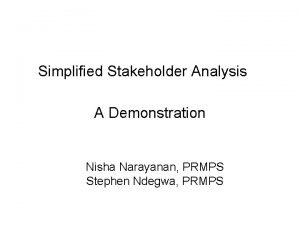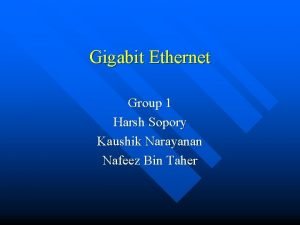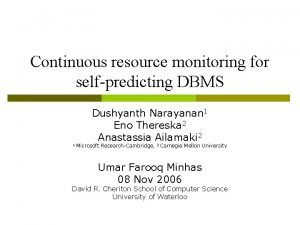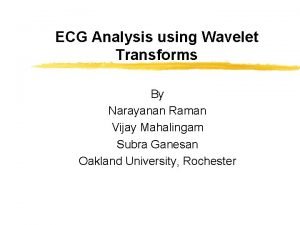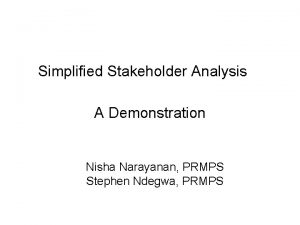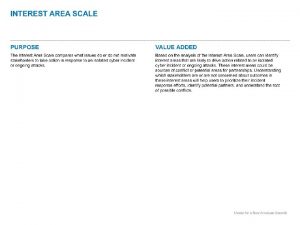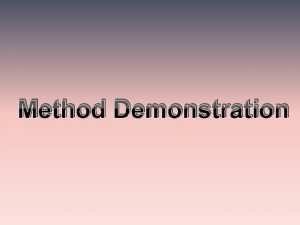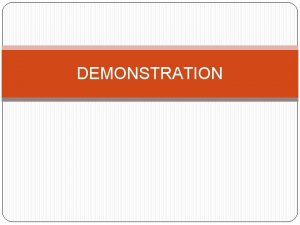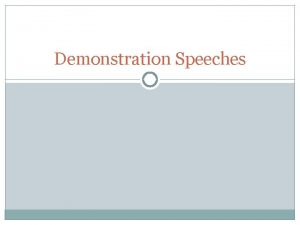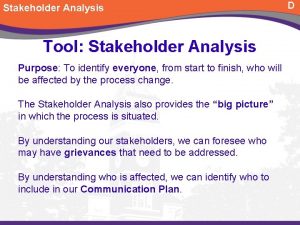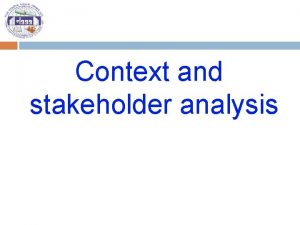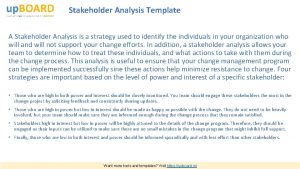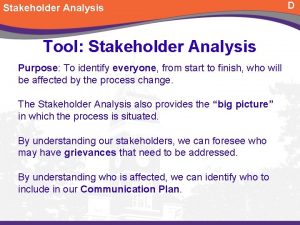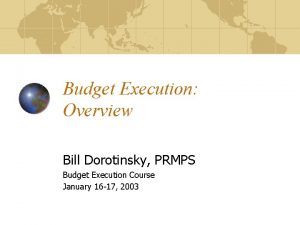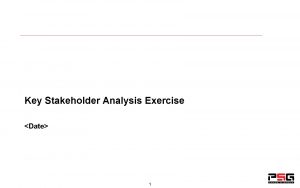Simplified Stakeholder Analysis A Demonstration Nisha Narayanan PRMPS

















- Slides: 17

Simplified Stakeholder Analysis A Demonstration Nisha Narayanan, PRMPS Stephen Ndegwa, PRMPS

Goals • • • Demonstration, preliminary use Simple, user-friendly and portable model Transparent calculations and assumptions Scenario building over prediction Accessible charts and grids as guides for potential options/targets for policy dialogue

Data Collection • As with other models, extensive and reliant on field interviews • Depending on government or policy area openness, data can be collected by two methods: • Interviews with specialists or experts and/or • Interviews with actual stakeholders

Data Attributes *Annex 1: New Effective Power equation

Sample Data

Policy Continuum A

New Policy Continuum B (#) = Effective Power

Effective Power/Position Matrix Identifies stakeholder position and their relative power -- how hard reform will be With simple rule -- movement within quadrant/subset -- allows setting goals to influence

Scenarios: Governing Assumptions • Stakeholders can only move within their policy preference sector, or minimally into next one • Strategy may then be to: – Move stakeholders with low policy reform preferences to the right or diagonally upwards by increasing information – Empower stakeholders with higher policy reform preferences to move up and to the right by increasing effective power

Influence-Salience Matrix Identifies the stakeholders by their level of salience and influence (color-coded on policy reform preference) Information on stakeholder attributes allows setting intervention strategy and coalition building

Specific Examples in response to influence-salience profile of opponents • • Promoters - counter or compromise Defenders - suppress potential action Latents – Increase salience Apathetics - Ignore

Specific Examples in response to influence-salience profile of proponents • Promoters - Build coalitions with low preference stakeholders-common interests • Defenders - Provide resources to promote position • Latents - Provide information and incentives to increase saliency and preference for reform • Apathetics – Ignore

New Policy Continuum B (#) = Effective Power

Improvements/Simplifications • Adds detailed stakeholder “reservation price” to policy continuum • Clarifies “effective power” equation • Focuses on creating scenarios in lieu of predictions to promote policy • Uses maps to identify and assess stakeholder positions and potential movement for dialogue and goal-setting

Conclusion • Simpler model – Portable, cost effective – Excel-based – WB team executed (data/scenarios/dialogue) • Transparent assumptions – Informed by Task team – country/issue knowledge – Theoretically valid, methodologically reliable • Organic scenarios over precise/debatable predictions

Annex 1: Effective Power Equation (. 70)*I + (. 30)*S = Effective Power • Effective Power is the weighted sum of 70% Influence and 30% Salience • Influence is weighted more than Salience because those with higher influence have a higher ability to block reform • Eg. A stakeholder with 80 (I) and 20 (S) has more power to veto a policy than a stakeholder with 20 (I) and 80 (S)

More Information • On Sentia’s Model, Other Models used elsewhere, Bank Pilots, and Simplified Model, please contact: – Stephen Ndegwa/Nisha Narayanan Ed Campos/Shilpa Pradhan (PRMPS) – Barbara Nunberg/Amanda Green (EASPR) – Jennie Litvack/Nabil Chaherli (MNSED)
 Prmps
Prmps Dr. bhargavi narayanan
Dr. bhargavi narayanan Kaushik narayanan
Kaushik narayanan Dushyanth narayanan
Dushyanth narayanan Slickpic
Slickpic Priya narayanan naac
Priya narayanan naac Neethu narayanan
Neethu narayanan Narayanan raman
Narayanan raman Nisha patel family feud
Nisha patel family feud Name of technique
Name of technique Dr nisha patel
Dr nisha patel Nisha nagarajan
Nisha nagarajan Nisha patel md
Nisha patel md Nisha singh md
Nisha singh md Nisha patel md
Nisha patel md Nisha rughwani
Nisha rughwani Stakeholder analysis fashion industry
Stakeholder analysis fashion industry Stakeholder analysis presentation
Stakeholder analysis presentation
